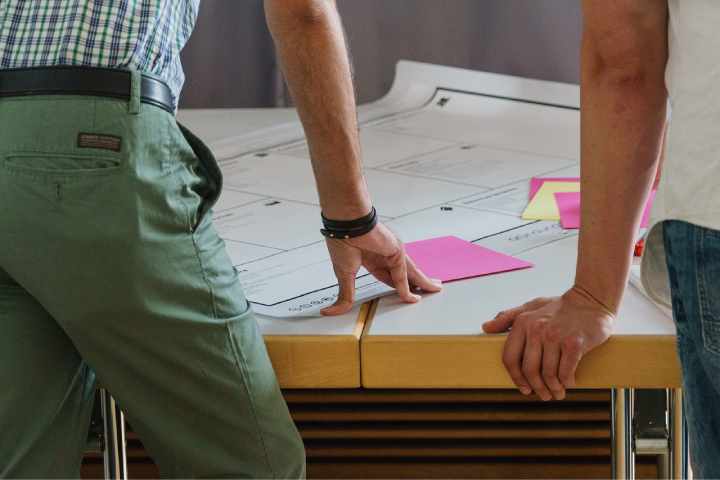Design Thinking Solves Your Problems – But How?

Usually, an article starts with the words: “What is XY?” In other words, a definition. But that’s usually different from the question that arouses interest. The central and exciting question is usually: Why do I need to know this? Or: What problem can I solve if I have this information? This article is about design thinking and the following answer: Design thinking is there to solve problems. And that’s what we all want, especially in learning. Or?
Table of Contents
Design Thinking: Creative Solutions For User Needs
Design Thinking is an innovative approach that aims to understand users’ needs and problems and to develop creative solutions. It is a human-centered method that seeks to deepen the understanding of the user’s perspective and to consider their needs, desires and behaviours.
At its core, Design Thinking is based on the idea that the best solutions emerge when different disciplines and perspectives come together. It is a multidisciplinary approach that encourages teams from other disciplines to collaborate and share their knowledge to develop innovative solutions jointly.
Design thinking involves an iterative process with different phases, such as understanding the user context, defining the problem, the idea generation process, prototyping and the testing phase. The user is the focus of the entire process, and the solutions are continuously improved based on their feedback.
Design thinking has applications in various fields, from product design and services to solving complex problems in business, healthcare, and education. It is closely related to creative thinking, empathy and experimentation and provides a framework for innovative and user-centric solutions.
Six Steps To Success
So let’s go into detail and get to the design thinking battle plan. This usually requires six different steps, which should be tapped one after the other.
Understand
The first step is the definition mentioned above. What should be developed and how? The target group can also be invited or surveyed directly. All critical framework conditions must be at least fundamentally (first) clear, milestones, challenges, and previous (competitive) offer.
Observe
In this step, the focus is on optimizing the basic definition from the first phase. As many users as possible should be observed as “closely” as possible. Interviews with the people concerned are excellent and valuable, but even better: watch them directly at work or when problems are solved. Then the results are as sober as possible. However, there is a risk that potential users may feel they are being watched and therefore behave differently. Depending on the product and the initial situation, it makes sense to observe “normal” or “extreme” users (very ()competent users of a program, for example). All findings must be carefully documented.
Define Point of View.
From the collected observations, selective profiles are then developed based on which product guidelines can be created. “Personas” are often required for this. Personas are character profiles that attempt to capture a “typical” user. But it’s not just about superficial things. The persona should be accurate. Including age, appearance, marital status, hobbies and everyday problems. The more alive the persona looks, the better. Ideally, the persona should be as focused as possible and based on the experience gained from the observation phase.
Find Ideas
In this phase, the game is played, and yes, played! It’s about developing ideas that are as creative and new as possible, without inhibitions. Everything for the designed personas. This works all the better the more diverse the composition of the idea-finding group is. In the best case, “real” users participate in the meeting and get involved. In the ideal case, a playful environment exists with cubes for painting, plasticine figures, and similar paraphernalia. The mind should be kept out in this phase. Classic brainstorming is usually the standard procedure.
Create Prototype
Based on these ideas, the prototypes are then developed. Investing only a little bit of time in the details is essential. Often, an extended paper sketch is enough to show specific processes. The faster you move towards the next phase, the better. But important: The real user must understand what is to be visualized!
Testing
The prototypes created are now extensively tested by actual users, and all progress and problems are carefully documented. When a prototype does not achieve the set goal, it is discarded, and the next draft is created. Then it is tested again. Phases 5 and 6 alternate until the user is satisfied with the product. Only then is the goal achieved.
Also Read: E-learning And Project Management
